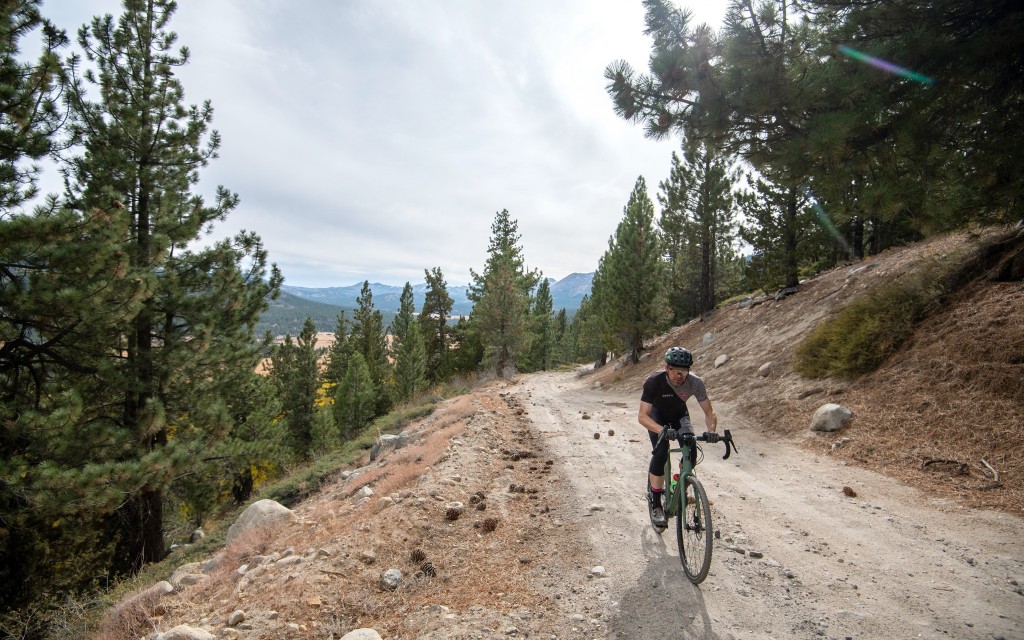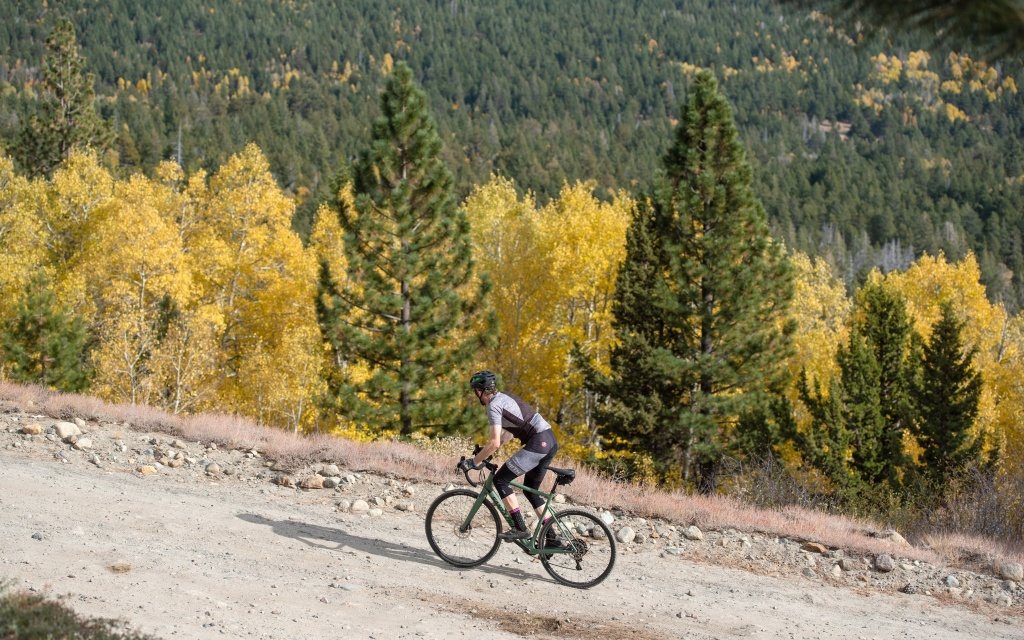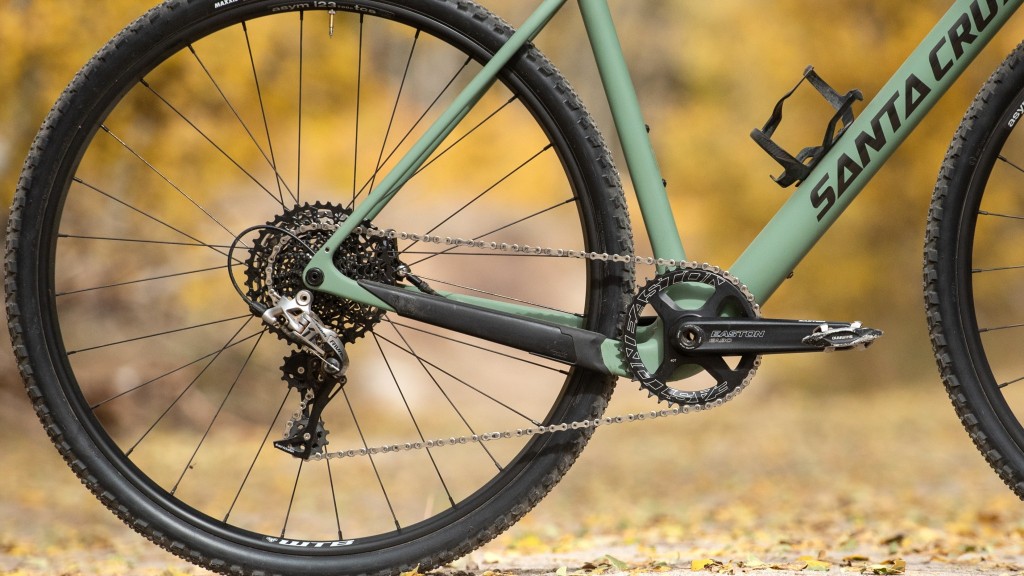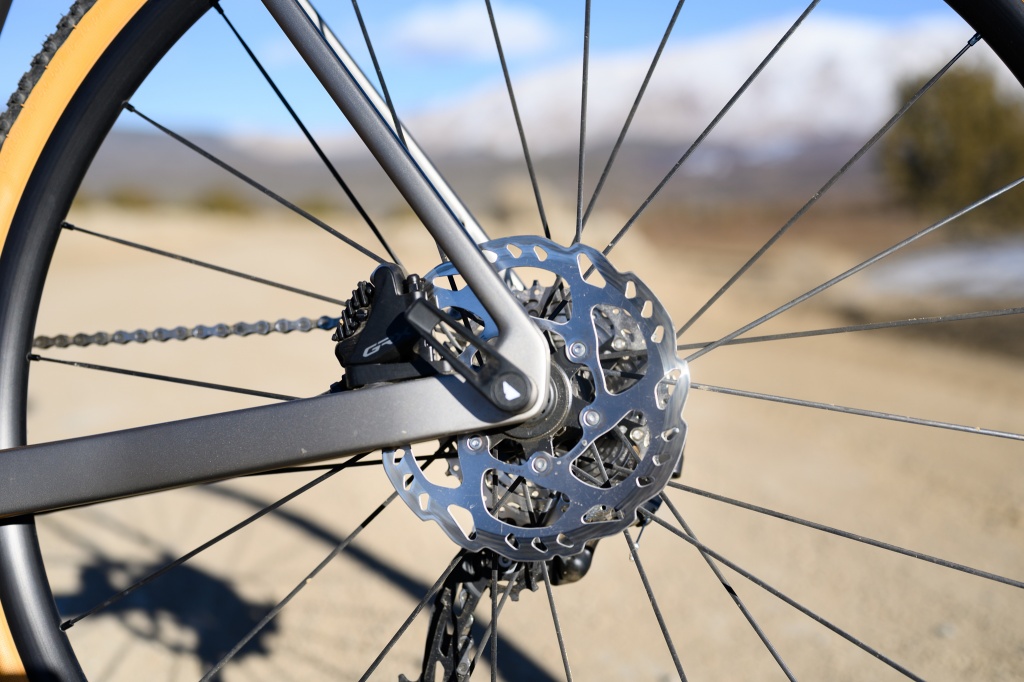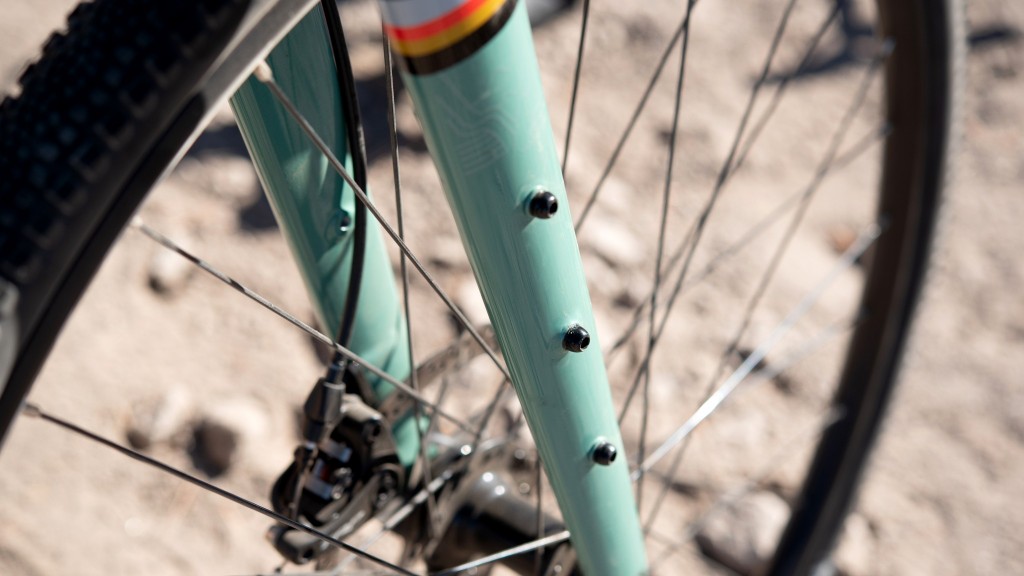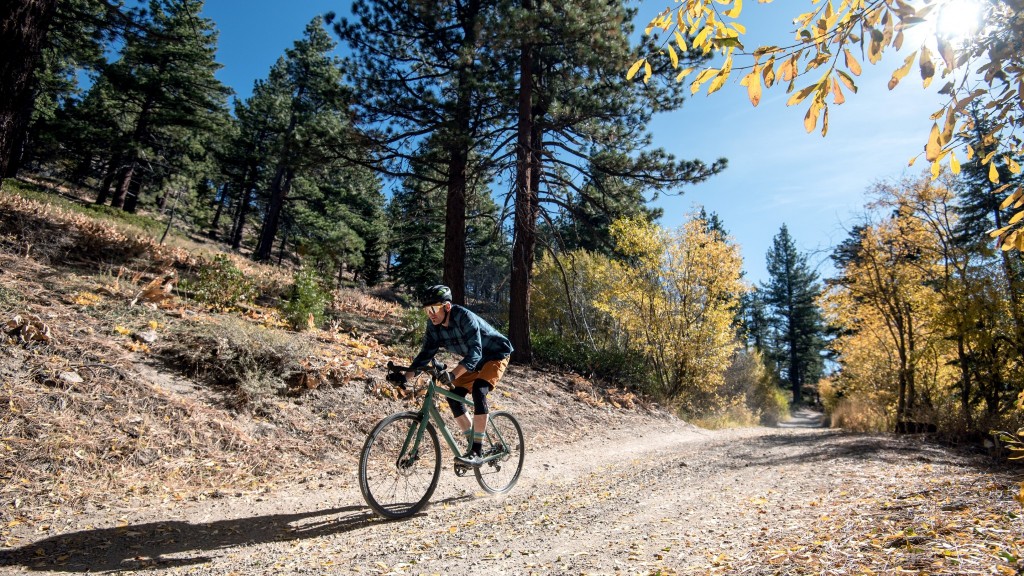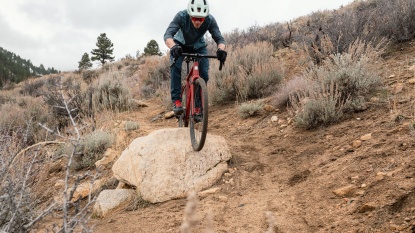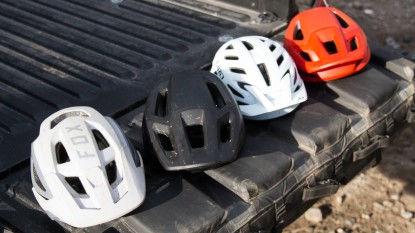What is Gravel Biking?
Gravel biking has exploded in popularity in recent years and is currently one of the fastest-growing markets in the cycling industry. The name gives it away; gravel biking is essentially riding a bike on gravel or dirt roads. You can think of it kind of like road biking but on dirt roads instead of pavement and usually with somewhat knobby tires. In the United States, there are many, many thousands of miles of dirt roads scattered from coast to coast, from the plains to the mountains, making gravel riding accessible to most people in most locations. It is appealing to many because it gets riders out on less-traveled roads in what is typically a more peaceful environment where you can enjoy nature and scenery with less distraction from vehicular traffic, etc. The beauty of top-rated gravel bikes is that they aren't limited to just dirt roads, as you can ride pavement and mellower trails on them as well.
As the sport has grown in popularity, so too have gravel events with races like Unbound Gravel, the Belgian Waffle Ride, Grinduro, SBT Gravel, the Mid South, and many, many more. Events like these attract thousands of competitors and participants to race competitively, push personal limits, or just have a good time with friends while exploring new places. Others use gravel bikes for touring, bike packing, or adventure riding. With gravel bikes and riding, you can choose your own adventure, whether that's chasing podiums or simply being out there; it's all up to you.
Do You Need a Gravel Bike?
When people first started to get serious about gravel biking, there weren't any gravel-specific bikes on the market. People modified road and mountain bikes or just used cyclocross bikes to get themselves out there. As the gravel market continues to expand, manufacturers have taken notice, and now virtually all of the major manufacturers have gravel-specific bikes in their lineups. Some smaller manufacturers have even sprung up, focusing exclusively on the gravel market, and more recently Shimano has created its GRX line of gravel-specific components, and other brands are joining the party with gravel suspension and various other parts.
The truth is, you don't need a gravel bike to go gravel riding. Any bike that you can comfortably and safely ride on dirt roads will suffice. Whether that's your old hardtail or the cyclocross bike you haven't raced in years, it'll probably work to get you out and enjoying some dirt road riding. Manufacturers have honed in on what makes a good gravel bike; however, with geometry, tire clearance, frame compliance, and gravel-specific components like flared handlebars and compliant seat posts, that can potentially make your gravel experience more comfortable and efficient. One nice thing about most gravel bikes is that they are highly versatile and can easily double as a road bike and tackle some light duty singletrack riding as well.
Gravel Bike Considerations
Just like any other type of bike, there's a lot to consider when testing for the best gravel bike, and deciding which one to buy. They come in all shapes and sizes, frame materials, wheel sizes, and builds to suit varying needs and budgets. It is essential to consider where and how you ultimately plan to ride your gravel bike, as well as how much you're willing and able to spend.
Frame Material
Gravel bike frames are produced in every material you can think of, although aluminum and carbon fiber are most common. Many more prominent bike brands make their frames in both materials to offer their bikes at different price points to suit a broader range of tastes and budgets. Some smaller manufacturers also produce frames in steel and titanium, though those materials are typically a bit more niche.
Carbon vs. Aluminum
Most gravel bike frames are produced in either carbon fiber or aluminum. Both materials work very well for creating bike frames, but they have some distinct differences. Aluminum is a relatively lightweight material that is inexpensive to produce and fabricate. Aluminum frames are almost always less expensive than carbon fiber frames, though they are typically a bit heavier. Aluminum frames have been known for being stiff and harsh, although modern production methods have helped to create more compliant and comfortable ride qualities. Carbon fiber is a very lightweight material with a high strength-to-weight ratio. Carbon fiber is significantly more expensive, as is the cost of the molds with a more involved production process making carbon frames and components more costly to the consumer. Not only is it lightweight and stiff, but carbon fiber can be manipulated in the production process with varying layups to produce distinctly different ride qualities, but you will pay a premium price for the "fancier" material.
Frame Size
Gravel bikes are most commonly sized in centimeters, similar to road bikes. For example, our six-foot-tall testers were riding 58cm frames which would generally equate to a size Large. Most manufacturers offer their frames in multiple sizes, usually at least five, to suit a large range of heights. If you are unsure of the size you need, manufacturer's websites typically have a sizing guide chart to assist you.
Wheel Size
Gravel bikes generally come with either 700c or 650b wheels. Larger wheels are more common, and 700c is the same size that you'll find on most road bikes. 27.5-inch or 650b wheels are popular with some riders and typically run wider tires for added cushion and traction. Many frames are designed to work with either wheel size, and some manufacturers give you the option to choose the size you prefer when purchasing a complete bike. It comes down to personal preference; 700c wheels typically provide greater rolling speed, while those interested in a more comfortable ride or a performance more akin to your favorite mountain bike may enjoy the benefits of 650b wheels and larger tires.
Tires
One of the defining characteristics of a gravel bike is the tires. Unlike a road bike where you want a smooth and narrow tire to reduce rolling resistance on paved surfaces, gravel riders usually opt for tires with more girth and air volume, as well as some tread that adds traction on uneven surfaces. The gravel bike tire market has grown as quickly as the market has expanded. Many tires are available in a vast range of sizes and tread patterns to suit varying conditions, terrain, and preferences. Riders who frequent smoother gravel road surfaces may be happy with a faster rolling, low-profile tread, while those who ride rougher roads or singletrack may opt for more aggressive tread patterns for more cornering, braking, and climbing traction. Like the wheels they mount on, gravel tires are available in either 700c or 650b sizes. The width of the tire you choose will depend on where and how you ride and the tire clearance of your bike's frame. Manufacturers have been steadily increasing the tire clearance on gravel frames, with most bikes now being able to fit up to a 700c x 45mm tire or 650b x 2.1", and some can go even wider. Wider tires have greater air volume, can be run at lower pressures to increase the contact patch and traction, and provide additional cushion for a slightly smoother and more comfortable ride. Most serious gravel cyclists prefer tubeless tires because they can run lower tire pressures for more traction and have a reduced likelihood of pinch flats.
Build
Gravel bikes come at a range of prices typically dictated by the frame material and the build, or component specification. Entry-level aluminum-framed models with budget-conscious build kits can be purchased for as low as $1,000, while the top-of-the-line carbon bikes with carbon wheels and electronic shifting can cost up to $10,000, sometimes even more. Most manufacturers make their gravel bike models in several build kits at varying price points. An example of this is Santa Cruz Bicycles which offer their Stigmata in a carbon frame only in six build options ranging from $4,599 to $8,149. How much you're willing to spend is ultimately up to you and your goals as a gravel cyclist. The differences in componentry may not matter to many riders but may be very important to those with competitive aspirations. Many frames can also be purchased as a frame and fork only, allowing the rider to choose the components themself to create their dream build.
Drivetrain
Most gravel bikes come with either a 1x or 2x drivetrain, which refers to the number of front chainrings. The trend of simplifying the drivetrain by removing the front shifter and derailleur has taken over in the mountain bike world and is also preferred by many gravel cyclists. 1x drivetrains usually have 11 or 12 gears on the cassette and provide a wide gearing range with narrow-wide chainrings and clutched derailleurs that help reduce the likelihood of a dropped chain. The lack of a front derailleur also helps to reduce drivetrain noise over rough terrain. The 2x drivetrain setups are still relatively popular among some cyclists as they have even more gear range, similar to that found on most road bikes. Riders who ride their gravel bike on the road regularly or those who live in areas with flatter terrain may enjoy having more top-end gears for laying down the power. Crankarm length is another consideration as riders of different heights have varying needs, and gravel bikes have relatively low bottom brackets. Some manufacturers offer their bikes with different length crankarms depending on frame size, with smaller frames getting shorter lengths and larger frames with longer lengths for riders with longer legs. Many manufacturers spec road bike components on their gravel models while others put mountain bike or gravel specifics parts on theirs. Like anything in the cycling world, there are lots of options.
Brakes
Most gravel bikes come equipped with disc brakes, either hydraulic or mechanical. Mechanical disc brakes are actuated by a cable and are generally found on lower-end builds. Hydraulic disc brakes are usually more expensive than their mechanical counterparts as they are slightly more complicated, with hydraulic fluid actuating the pistons in the brake calipers. Like any bike part, hydraulic disc brakes come in a range of performance levels and prices. Either type of disc brake usually works pretty well as they are typically less affected by moisture and mud than rim brakes. Rim brakes are still used among some gravel riders, although they are generally only found on custom builds.
Cockpit
Cockpit setups on gravel bikes have been evolving with some gravel-specific products like handlebars and seat posts made to enhance comfort and performance for dirt road riding. Most gravel bikes come with drop-style handlebars like those found on a road bike, while you can purchase some gravel bikes with a flat bar like you would find on a mountain bike. The flat bar is preferred by some riders to improve balance, stability, and handling or to achieve a more mountain bike-like feel. Drop handlebars come in all shapes and sizes and vary in width, construction, and "flare." Many bars come in a range of widths to suit riders' preferences, with wider handlebars typically providing a higher degree of front-end stability and steering leverage. "Flare" refers to the drops of a drop handlebar being bent or flared out to the sides at varying degrees. Flare is measured in degrees from 0 to about 25-degrees, with the most common flared bars falling about midway between those numbers. A flared bar makes the width of the drops wider than the hoods, which helps to increase stability and control through a broader and more balanced upper body stance in the drops. The shape of a handlebar's tubing also varies to make a bar more comfortable for extended periods with features like flat tops. Some manufacturers have even gone so far as to engineer their bars to be compliant, helping to take the edge off vibration and impact to reduce hand fatigue. Handlebar tape is another thing to consider, as it comes in a wide array of thicknesses and padding levels, which can also play a role in comfort and performance. Like handlebars, some seat posts have also been designed to be compliant and flex towards the back of the bike to relieve road chatter and vibration. Some riders will even put shorter travel dropper seat posts on their gravel bikes to lower their saddle for extended descents.
Suspension
The vast majority of gravel bikes are fully rigid, meaning that they have no suspension in either the front or rear of the frame. There are a few exceptions to this rule. The major suspension manufacturers, Fox and RockShox, have recently launched gravel-specific forks. Featuring between 30 and 40mm of travel, these lightweight suspension forks can make a world of difference over rough terrain. We had the opportunity to test the RockShox Rudy XPLR fork on the Canyon Grizl 7 Suspension and were blown away by the increased comfort and control it provided. The tradeoff is an increase in weight, however, as suspension forks are significantly heavier than rigid carbon forks.
Some manufacturers have developed innovative ways to take the edge off of impact and the high-frequency vibrations associated with riding on rough surfaces. An example of this is the Future Shock design used by Specialized on their Diverge models. This unique suspension design is housed in the head tube and allows 20mm of suspension in the handlebar. A few brands like Cannondale and Niner have gone so far as to make gravel bikes with some rear suspension, although this isn't especially common. Other manufacturers are getting creative with compliant handlebars and seat posts designed to flex and provide a small degree of vibration dampening, though this can hardly be considered suspension.
Versatility
Gravel bikes are highly versatile and typically not limited to any one riding style. You can easily use them for commuting, road riding, bike packing, touring, and even mellower singletrack rides. How you choose to use your gravel bike is ultimately up to you, although some are more oriented towards adventurous riding like bike packing or bike touring. These will often have a more conservative or upright geometry and may come with many threaded accessory and rack mounts. Salsa and Niner are a couple of brands notorious for their wealth of mounting options. Other bikes are more race-oriented, with super stiff frames and lightweight builds that prioritize speed and efficiency over comfort.
Conclusion
We hope the information presented here helps you understand and navigate the often confusing process of making a new bike purchase decision. There are many gravel bikes to choose from, and the market continues to expand as this genre of cycling continues to grow in popularity. The most important thing is to understand your goals as a gravel rider, get a bike that best meets your needs and budget, and then get out and ride.


